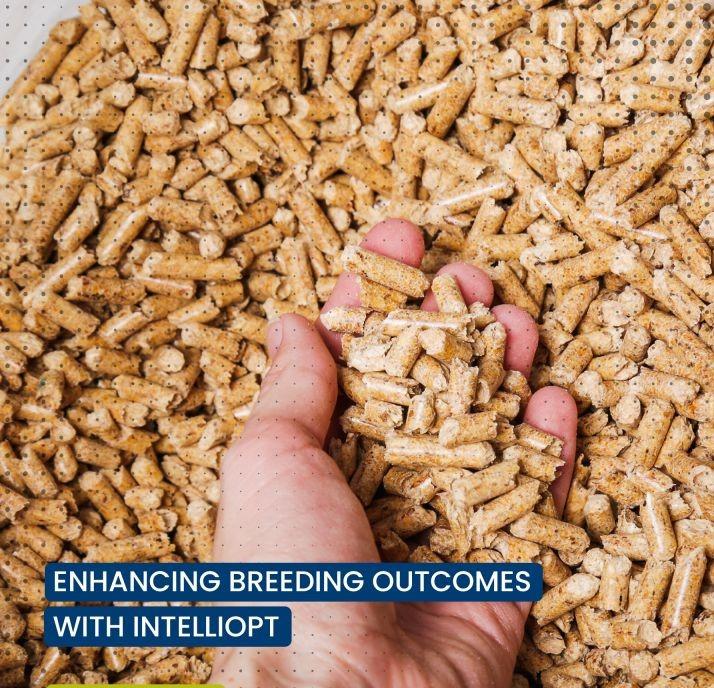Explore all the information on
Poultry genetics and reproduction
Poultry breeding has been one of the most impactful advances in the last 100 years. The role that improved global production of eggs and poultry meat have in reducing global hunger and food insecurity is difficult to overstate. The vast majority of these improvements have come from genetic selection for improved feed efficiency, along with streamlining of the overall production system, and better understanding of poultry nutrition. While the industrial approach to poultry production has created a highly consistent and dependable food source the world over, several problems threaten the long term sustainability of this model - including musculoskeletal and metabolic disorders, welfare concerns, and the need to adapt to a changing climate. Researchers in poultry breeding and genetics utilize quantitative, population, and molecular genetic techniques to help understand the effects of selection for economically important traits and enhance genetic performance through changes in environment and management strategies.
INTRODUCTION Thermotolerant Campylobacter spp. are a major cause of foodborne gastrointestinal infections worldwide. Human campylobacteriosis in its acute phase is characterized by diarrhea, fever, abdominal cramps, and vomiting and has been linked to the development of Guillain-Barré syndrome, reactive arthritis, and irritable bowel syndrome as complications after the acute phase of the disease (Loshaj-Shala et al., 2015). The WHO (2015) estimated that Campylobacter...
Comments : 0
Recommendations: 0
Duarte Neves (Zinpro) This study aims to evaluate shell translucency as a novel eggshell quality parameter to predict hatchability of fertile eggs. A total of 22,140 eggs were collected from 738 broiler breeder flocks between 25 to 65 wks of age, from multiple commercial hatcheries in the US. Translucency was completed with Zinpro® BlueBox TM using a 3-point score system: TS1 = none or few small translucent spots; TS2 = several...
Comments : 0
Recommendations: 0


Effects of Amino Acids on Immune Responses and Gut Health in Poultry
Suggested link
Abstract: A photographic guide to goose embryo development is compiled to help visually determining time of embryo mortality in eggs during incubation. Introduction Goose eggs can be particularly difficult to hatch due to their large size, the hardness of their shells, and the need to cool them regularly. The incubation period of goose eggs takes about 30 days and percent hatch generally does not exceed 70 %. Candling of hatching eggs...
Comments : 7
Recommendations: 1
Alin Khaliduzzaman (University of Illinois Urbana Champaign) comments on his research presented at the IPSF regarding sensing technologies and information science to improve egg quality control, in this Engormix interview during IPPE 2024 in Atlanta, USA....
Comments : 0
Recommendations: 0
Alin Khaliduzzaman (University of Illinois Urbana Champaign) Some of the continents and countries might suffer severe food shortage in the next few decades due to climate changes, global unrest, and economic instability. Therefore, we need major technological advancement for egg and poultry production industry to deal with global animal food security and poultry welfare issues. The current hatchery practices, post-hatch grading of day-old chicks,...
Comments : 0
Recommendations: 0
Duarte Neves (Zinpro) comments on how translucency can be used as a novel eggshell quality parameter to predict the hatchability of fertile eggs, in this Engormix interview during IPPE 2024 in Atlanta, USA....
Comments : 0
Recommendations: 0
Jodi Delago (Arm & Hammer) Hatchability rates in the US broiler industry have been declining since 2014. The average weekly hatchability rate in the US in 2023 has been approximately 80.7%, a decrease of more than 4% since 2014. Published studies of nonviable embryos in Canada indicated that Enterococcus faecalis and Escherichia coli are frequently recovered from nonviable embryos and that infection by one or both bacteria may be contributing to...
Comments : 0
Recommendations: 1
Jodi Delago (Arm & Hammer) discusses declining hatchability rates caused by Enterococcus faecalis and Escherichia coli, in this interview during IPPE 2024 in Atlanta, USA....
Comments : 0
Recommendations: 0


An impact of Deoxynivalenol produced by Fusarium graminearum on broiler chickens
Suggested link
I. INTRODUCTION Modern broilers grow quickly because they have tremendous genetic potential due to intensive selection for increased growth rate and efficiency (Zuidhof et al., 2014). The parents, broiler breeders, carry this genetic potential and when fed ad libitum, easily become overweight (Heck et al., 2004), compromising reproductive performance (Renema and Robinson, 2004; Chen et al., 2006) and reducing welfare (Mench, 2002). Thus, broiler breeder hens are typically feed...
Comments : 0
Recommendations: 0
Press release - After the successful product launch in France in January, site expansion of a satisfied customer, and more than 23 million eggs scanned; a new installation with three modules of the Genus Focus in-ovo sexing is installed at LOHMANN Deutschland Hatchery,...
Comments : 0
Recommendations: 0
Jonathan Cade, President of Hy-Line International, talks about the current trends and challenges in poultry production and how the Hy-Line team supports egg production worldwide...
Comments : 0
Recommendations: 0
Breeding is crucial in livestock management, ensuring continuous production and maintaining genetic excellence. Better breeding results mean healthier offspring, higher birth rates, and enhanced herd or flock health. Nutrition is pivotal for breeding success in most livestock. Balanced diets, rich in essential vitamins, minerals, and nutrients, help animals achieve their full reproductive potential. We present IntelliOpt, the solution for effective nutrient utilization...
Comments : 0
Recommendations: 0
As part of the practical section on poultry reproductive system anatomy for third-year students at the College of Agricultural Studies, Sudan University of Science and Technology, we procured a spent layer hen from a local market in Khartoum North. The objective of the dissection was to examine the reproductive system, which is composed of the ovary and the oviduct (Fig. 1). The ovary is responsible for the development of ova or yolks. When an ovum has matured, it is released from the...
Comments : 0
Recommendations: 0
.jpg&w=3840&q=75)

40 Years of Success in China with Hy-Line (Mandarin-language video)
Suggested link
Artificial insemination is currently a necessary and exclusive means of breeding turkeys in large farms (Di Iorio et al., 2020; Slowinska et al., 2018). For optimal fertility outcomes, breeders must focus not only on the insemination itself, but also on the quality of collected semen. The culture medium is one of the main factors influencing semen quality and turkey spermatozoa in in vitro conditions. The aim of the study was to evaluate the impact of selected additive substances with...
Comments : 0
Recommendations: 0
Introduction Commercial egg-laying chickens reach sexual maturity (begin laying eggs) at about 16-18 weeks of age. At 30-32 weeks of age, they attain their peak egg production. During the first year of laying, hens maintain a high laying rate (> 90%) (an average hen lays > 320 eggs), and subsequently, egg production gradually drops, indicating a decrease in ovarian function. The ovulatory cycle in hens lasts about 24-26 hours, depending on age (e.g., shorter in young...
Comments : 0
Recommendations: 0
Edgar O. Oviedo-Rondón, Ph.D., from North Carolina State University (United States) speaks about management practices to overcome male breeders' fertility issues...
Comments : 2
Recommendations: 0
by Sam Shafer
Poultry scientists offer an approach for more accurate predictions of immune system function in birds
New research suggests poultry breeders can boost immune system function in birds by updating their prediction models to include “non-additive” genetic effects. The new study, published in The...
Comments : 0
Recommendations: 0


Effects of Amino Acids on Immune Responses and Gut Health in Poultry
Suggested link
Conventional broiler (meat) chickens reach a final weight of 6.6 lbs (3 kg) in approximately 40-44 days. Across their lifetime, these fast-growing birds gain an average of 68-75 g per day, with daily gain increasing with age (Aviagen, 2022; Cobb, 2022). With their fast growth, however, they...
Comments : 0
Recommendations: 0



.jpg&w=3840&q=75)




.jpg&w=3840&q=75)


.jpg&w=3840&q=75)
























